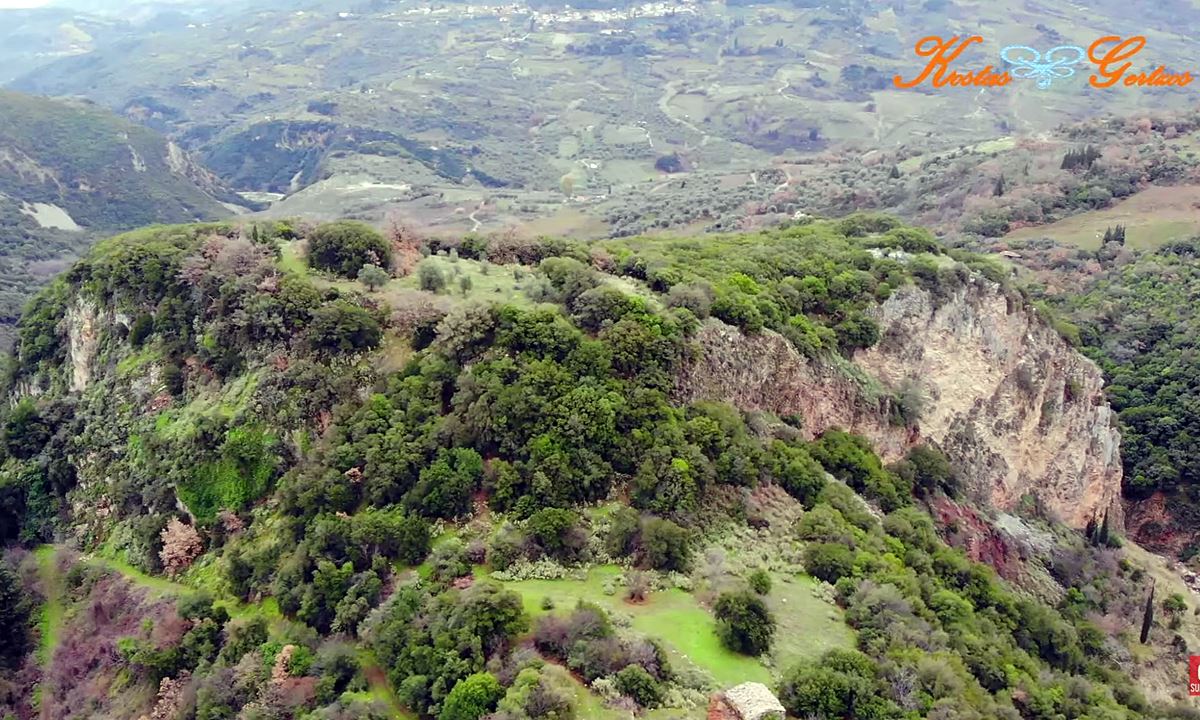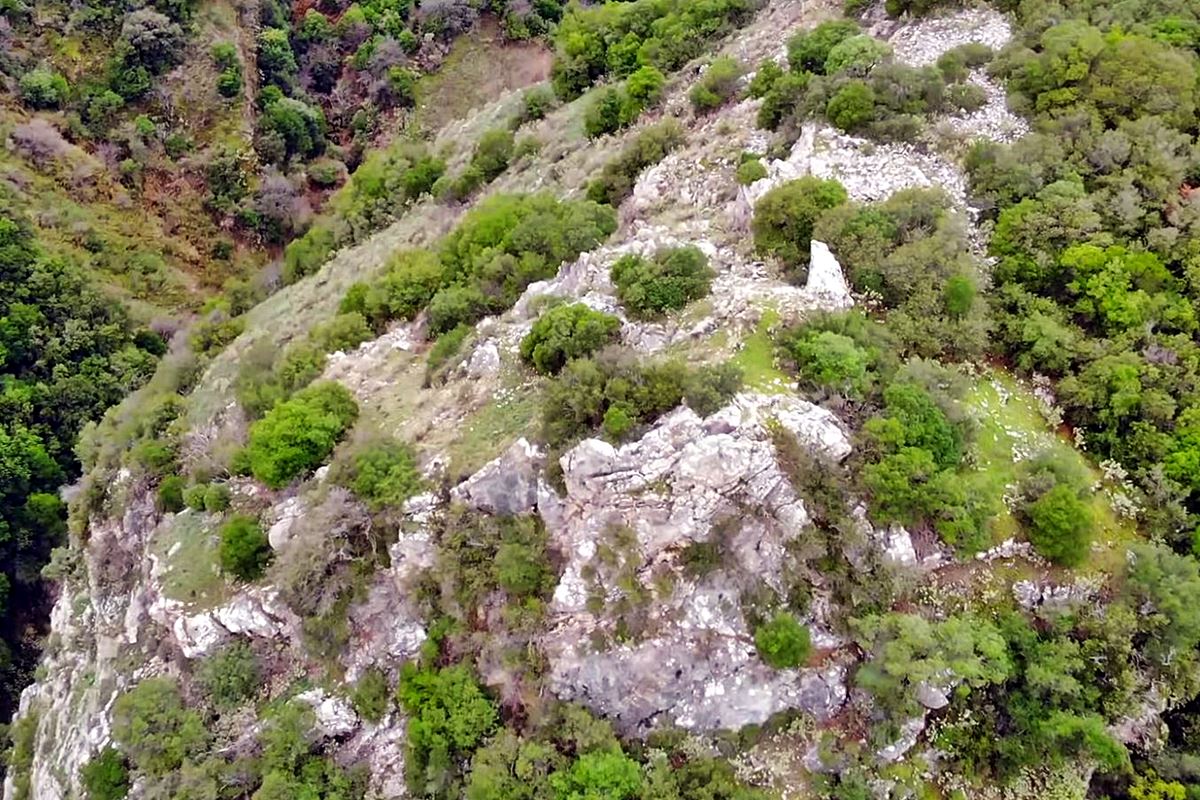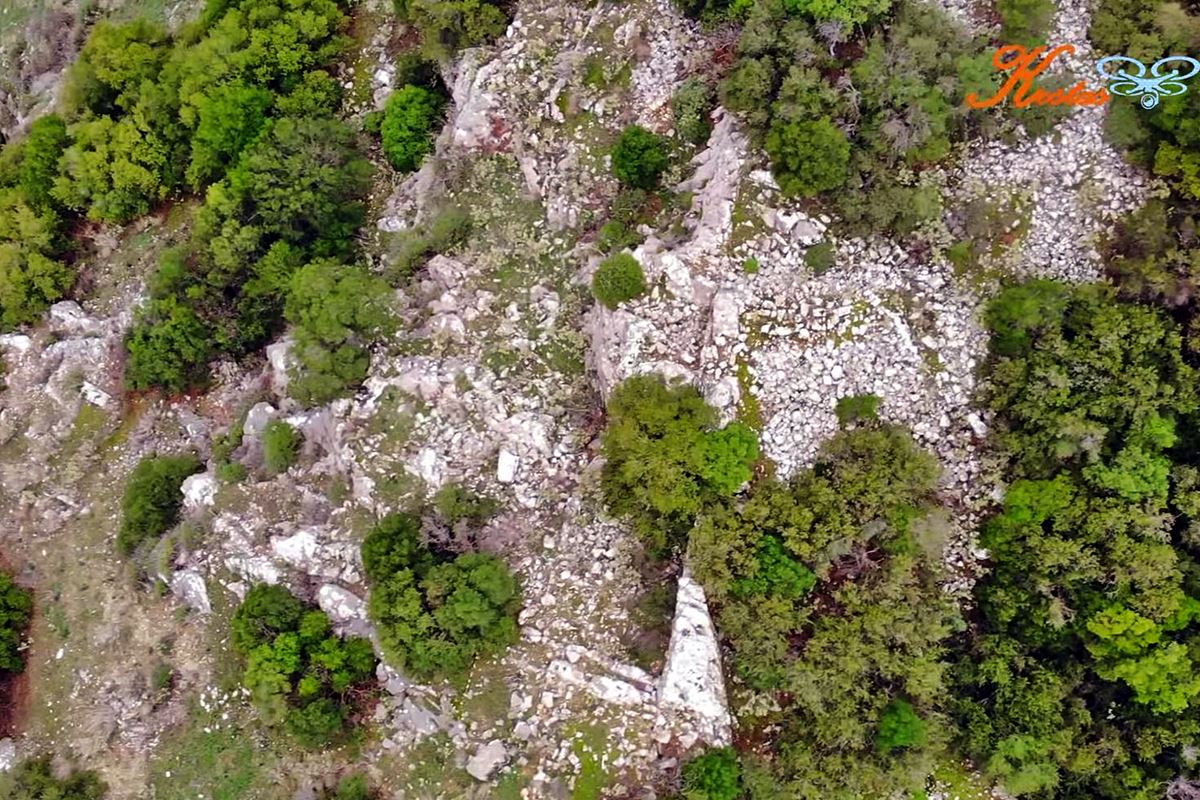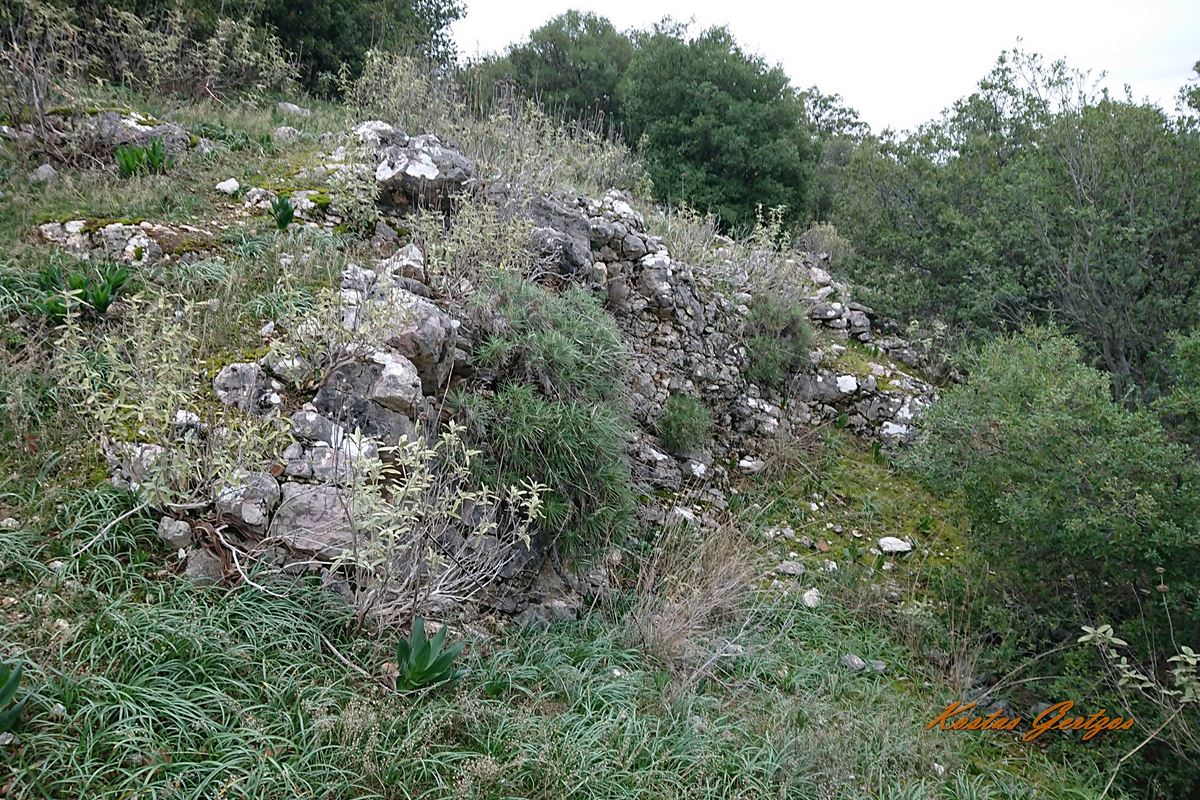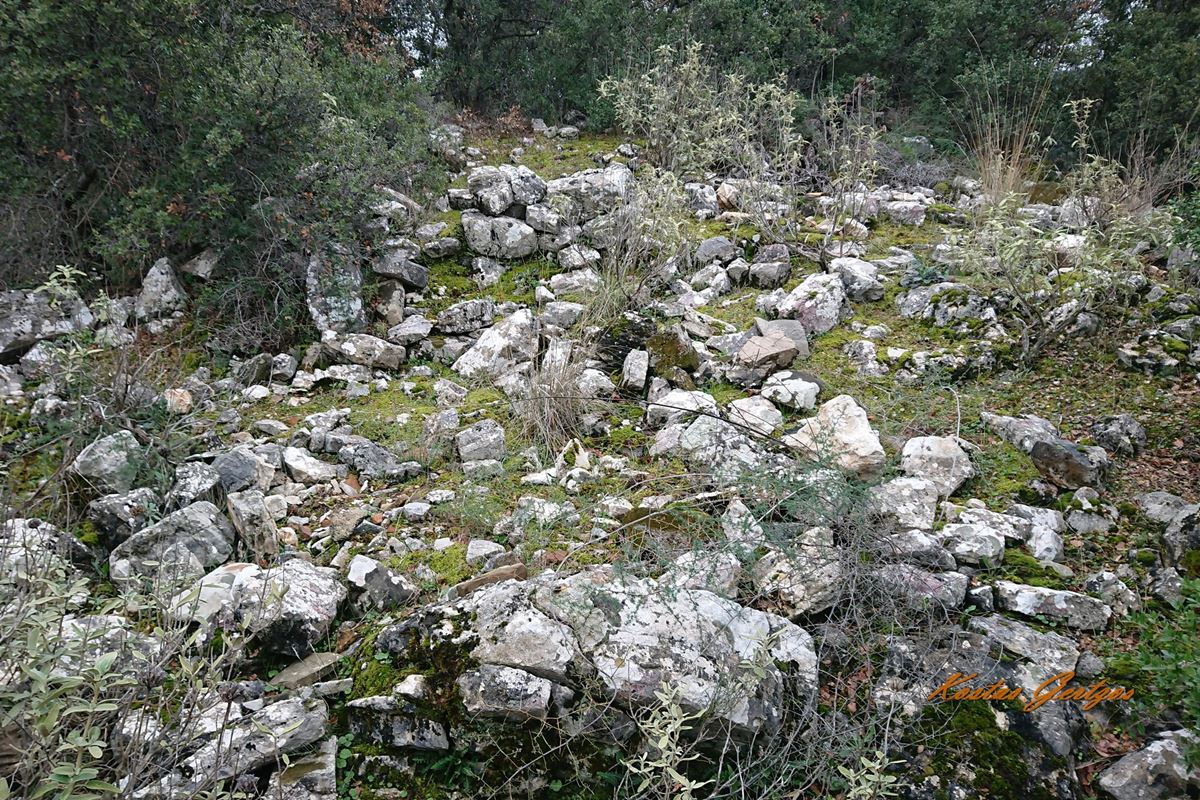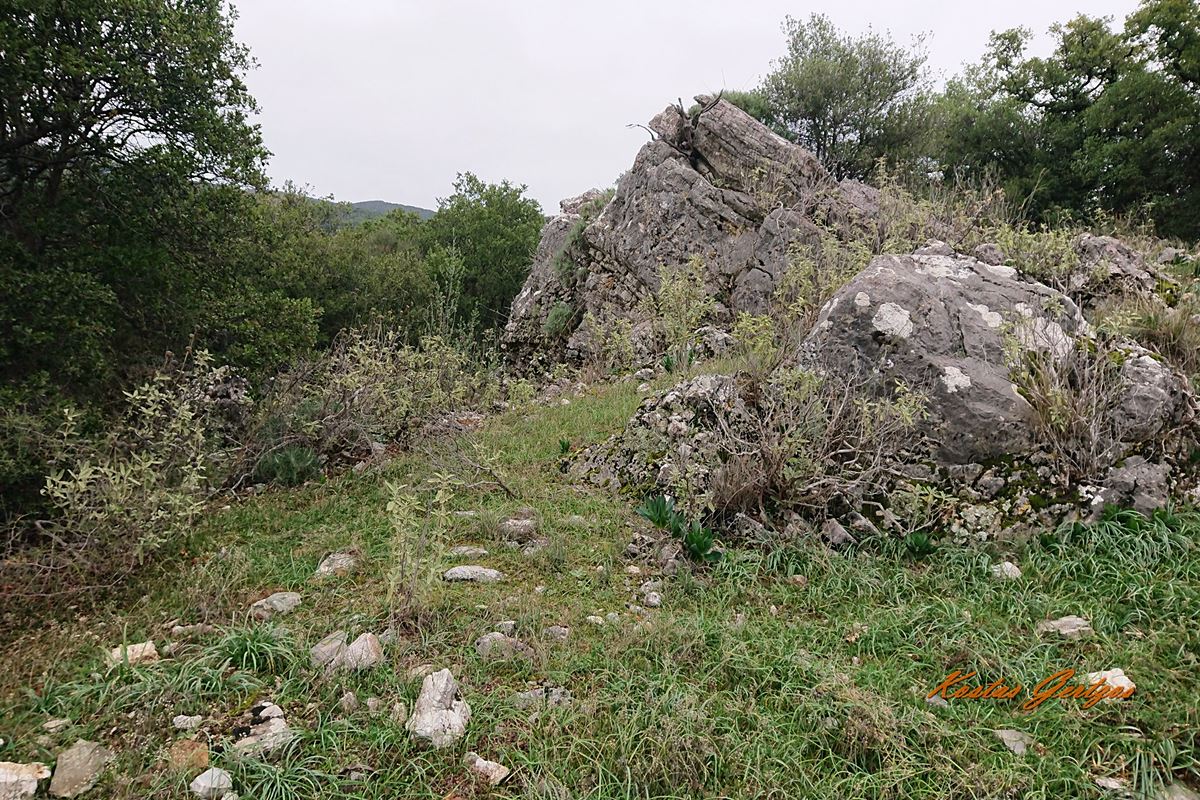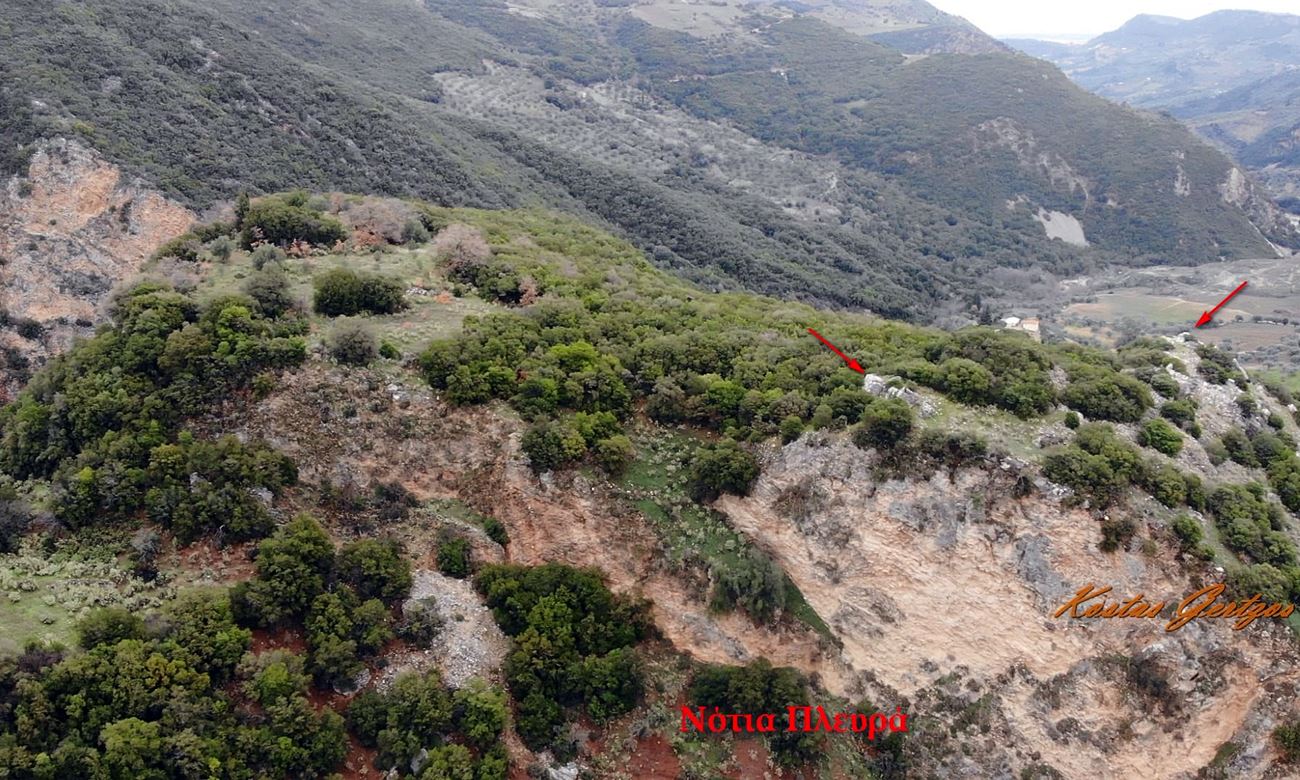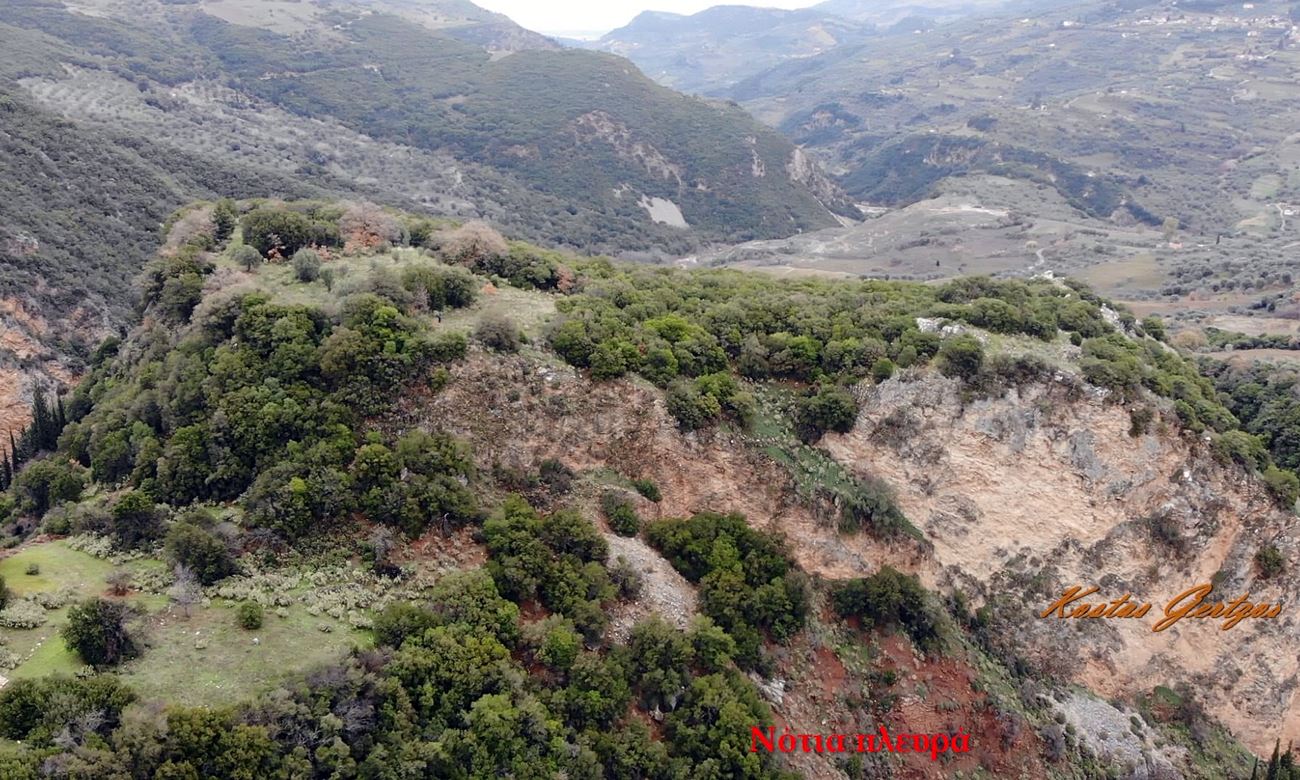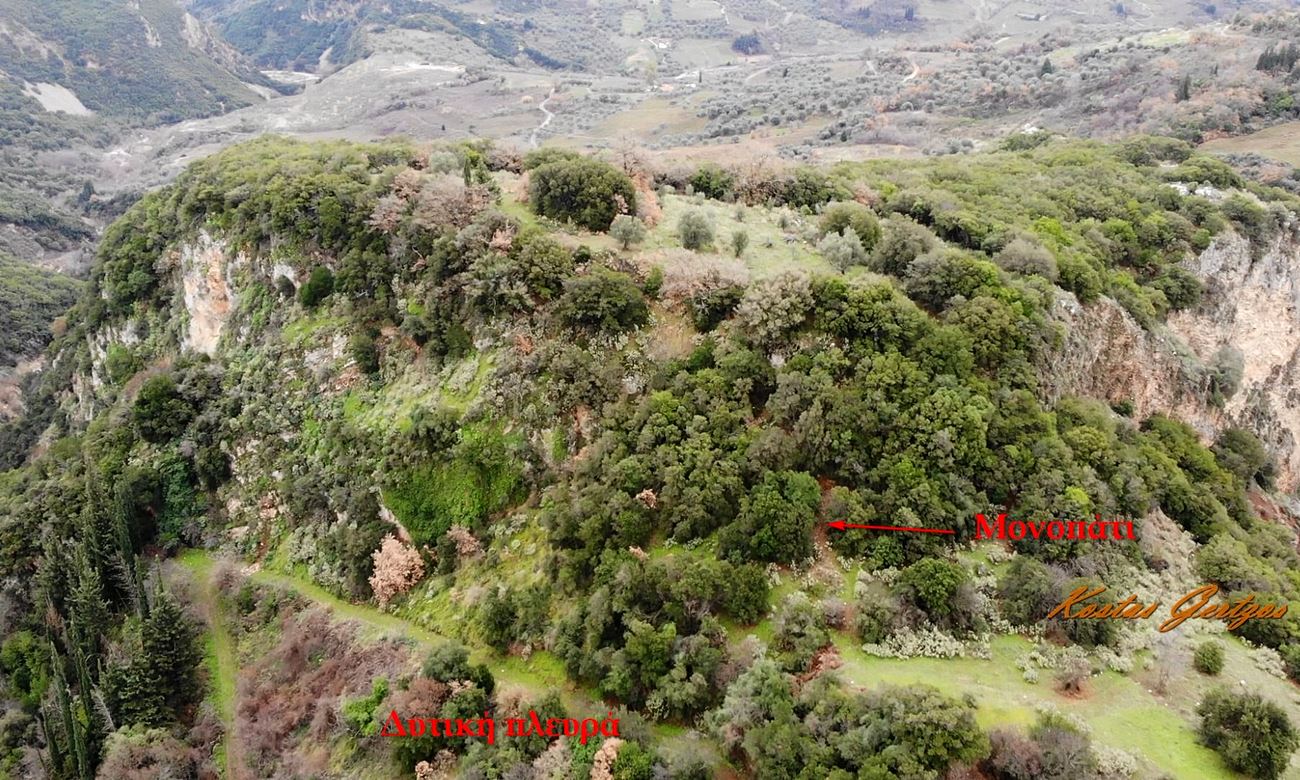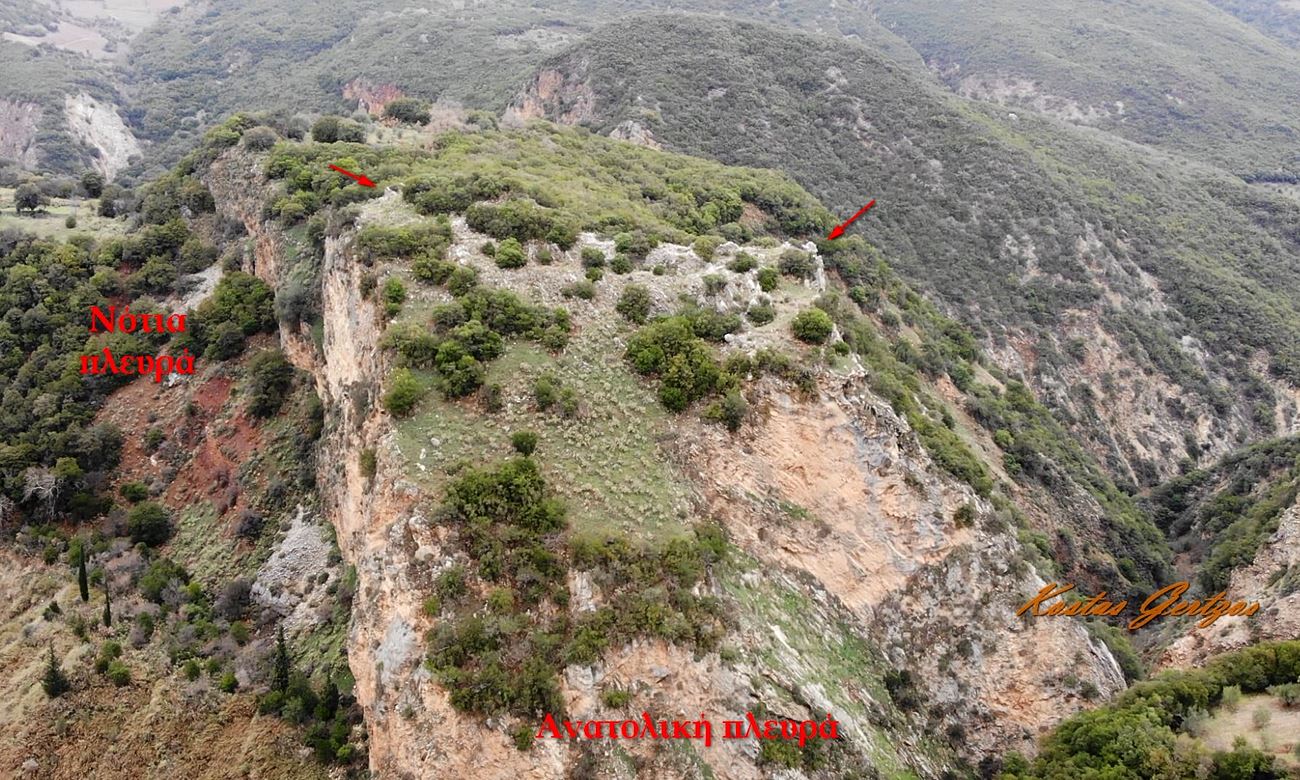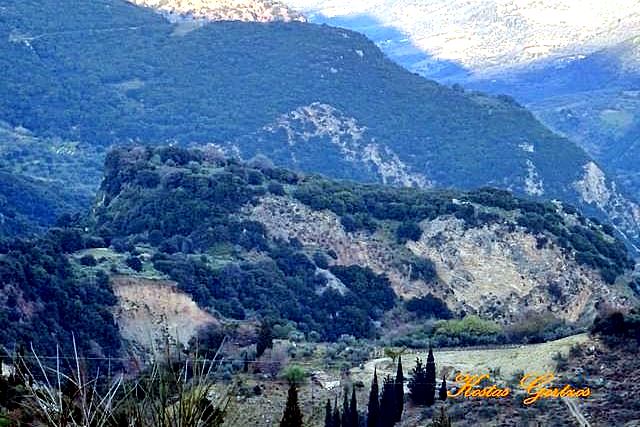Graikas, Aigialeia, Achaea,West Greece
Castle of Listrena
| Location: |
| On a hill 2.5 km east of the village Graikas in Achaea, NW Peloponnese. |
| Region > Prefecture: | 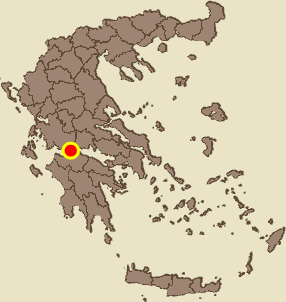 |
| West Greece Achaea | |
| Municipality > Town: | |
| City of Aigialeia • Graikas | |
| Altitude: | |
|
Elevation ≈ 475 m (Relative Height≈0 m) |
| Time of Construction | Origin | |
| perhaps 10th cent. | BYZANTINE |
|
| Castle Type | Condition | |
| Castle Ruins |
Few Remains
|
Few ruins of a Byzantine and Frankish castle on a hill 2.5 kilometers from the village of Graikas in the prefecture of Achaia. Graikas is located in a semi-mountainous area of the Panachaiκon range, 15 kilometers southwest of Aegio.
The castle has been identified with the Listrena or Listrina castle mentioned in the Frankish catalogs of castles, but also in the first Ottoman census.
Location & Strategic Scope
The castle is located on a hill with steep slopes. Three of its sides are surrounded by two streams that end up in the Maganeita river. The ravines that are formed ensure natural protection to the castle from 3 sides and only on the western side is there a neck that communicates with the neighboring hill through a narrow passage. On this vulnerable side was a wall. The other sides were not fortified.
The hill has a relatively high altitude (475 meters) but does not have an altitude difference from the surrounding hills.
History
In the list of Frankish fiefs of 1463 Lastrana or Listrenu is included among the castles belonging to the Latin archbishop of Patras.
Listrena is again included in the list of 1463 (by Stefano Magno), but it is now described as ruined. The same is repeated in the list of 1471 where we find Listrena again as destroyed, but, as we will see below, the castle was repaired for a while in 1465 by the Venetians.
The castle is mentioned as Listrina in the correspondence of the Venetian provveditore Jacomo Barbarigo (August 1465), and he is probably the reason why the castle has the alternative name “Listrina”.
It should be noted that Barbarigo describes the castle as luego forte, i.e. a strong place (Sathas, 1880-90). In general, the history of Listrena shows that it was one of the important castles in Achaea.
The castle of Listrena is not considered Frankish. According to the local researcher N. Lekkas (1916), the castle existed before the Frankish occupation.
It was probably built around the end of the 10th century and was conquered by the Franks in 1205 during the congesta of Peloponnese. According to N. Lekkas, who records local oral tradition, the Franks were able to capture the castle after the betrayal of an old woman named Listraina, who showed the Franks where the aqueduct that brought water to the castle was. The castle was surrendered when the Franks cut off the water.
Later the Greeks punished Lystraina by burying her alive. Supposedly this tomb still exists at a site called “the old woman's grave”. Needless to say, the castle was named after the old woman.
This story is not mentioned in the historical sources of that period and we cannot be at all sure that it is real. After all, similar legends about old women who betrayed castles survive for at least three other Greek castles (Faneromeni in Andros, Kastello Agios Stefanos in Crete and Zichna in Macedonia).
However, regardless of any doubts about the truth of the Listrena legend, the castle is very likely indeed Byzantine.
In the castle of Listrena, the Florentine Duke of Athens Nerio Acciajuoli was imprisoned for 9 months, from September 1389 to May 1390.
This is what happened:
The capable and shrewd Nerio Acciajuoli was the most powerful Frankish ruler in Greece at the time and had married his daughters to two equally powerful rulers: the despot of Mystras Theodore I Paleologos and the Count of Kefallinia Charles I Toco.
In 1389, the Byzantines of Mystras, in alliance with Nerio, captured Argos, which had just become a Venetian possession, as shortly before it had been sold at a bargain price to Venice by Marie d'Enghen, the last descendant of the French dukes of Athens.
The Venetians reacted to the seizure of Argos and imposed sanctions on both the Duchy of Athens and the Despotate of Mystras. In particular, Venice cut off all commercial relations with these states and blockaded the ports, a measure that created serious problems.
At the same time, the Venetians secured the help of the mercenary company of the Navarrese who had gained control of the Principality of Achaea. The leader of the company, Pedro de San Superano, was a bailiff of the Principality and although he had previously been an ally of Nerio (helping him win the Duchy of Athens), at that time he had come close to the Venetians and, moreover, he had assumed the role of the champion of the rights of the Aragonese king of Sicily to whom the duchy of Athens belonged before Nerio seized it.
So Superano playing the role of mediator in the conflict with Venice, invited Nerio Acciajuoli to Vostitsa (Aegio) to discuss the thorny issue of Argos. Nerio did not suspect the trap of his old ally and naively went to Aegio. There he was arrested by the brother-in-law of Superano, the Genoese Andronikos Asan Zacccaria, and imprisoned in the castle of Listrena. Listrena was chosen because it was a fief of Asan Zaccaria who was baron of Chalandritsa and Vostitsa. Another reason it was probably because Listrena was a relatively isolated and unknown place.
Nerio's imprisonment caused a mobilization of his powerful friends, including his two sons-in-law, his brother who was a cardinal of Florence, and the Pope himself. Finally an agreement was reached with Venice and the release of Nerio was agreed upon after brave concessions to the Venetians (he gave them the port of Megara, his daughter Francesca as a hostage and around 15,000 ducats) and after pledging to persuade Theodore Palaiologos to leave Argos (which finally happened in 1394, for other reasons).
In addition, the greedy Navarrese also demanded an exorbitant sum to release the duke. The Athenians made many sacrifices to collect the ransom and among other things had to melt the silver lining of the gates of the Parthenon (which had been converted into a church, known as Panagia the Athenian), and to liquidate the gold and silver offerings of the temple and of the cathedral of Corinth.
The castle must have remained in the hands of the Franks and Centyrion II Zaccaria (the last Prince of Achaea) until about 1430, when the Principality was conquered by the Byzantines of Mystras.
The region fell into the hands of the Turks in 1458, in the first campaign of Mohammed IΙ the Conqueror to the Moreas, when he conquered all of the northern Peloponnese. In 1460, in their last campaign to Moreas, the Turks used the castle of Listrena as a base for the difficult siege of the neighboring castle of Salmeniko which was the last castle of Peloponnese to fall into the hands of the Turks.
In the Ottoman census docuemens compiled after the completion of the occupation of the Peloponnese, in the years 1460-1463, both the village of Graikas with 4 households, and the adjacent Listrena castle with 14 households and 4 widows are listed (Liakopoulos, 2019).
During the First Venetian-Turkish War, the castle of Listrena was captured by the Venetians. The Venetian Jacomo Barbarigo, who was the Provveditore of Morea from May 1464 until his impaling by the Turks in 1466, suggested in his letter to Venice the repair of this strong fortress (Sathas 1880-90).
From this report we learn that the fortress was the main camp of the Ottomans in the area, with 3000 men, of which 1000 were Turks (?) and had been captured, after a bombardment, by the Venetian nobleman Marco Vegia.
The castle was repaired, but after the death of Barbarigo and the failure of the Venetians to capture Patras, the Turks recaptured Listrana in 1466 or 1467. It is then – probably – that the castle was destroyed and abandoned.
It is almost certain that the castle was destroyed by the Venetians themselves before they left. It was something they used to do in those years.
In the Venetian census of Grimmani of 1700, Graikas is recorded as a village in the province of Vostitsa inhabited by 5 families, but there is no mention of Listrena...
Structure, Fortification & Buildings
As mentioned above, the castle had a fortification only on the vulnerable western side. The other sides were unfortified. A few remains of the western wall are preserved.
In general, not much is saved from the castle. According to Sfikopoulos (1968), the ruins of about 20 buildings are preserved inside. Their dimensions are: length 4.20m. 2-3 m wide and up to 1 m high, at most. Foundations of round houses and small defensive towers can also be seen.
Towards the south side there are the ruins of a small church (photo 3), while at the highest point of the castle there are ruins of two other buildings. These ruins (the church and those at the top) have mortar in their masonry, while the rest of the buildings do not.
Until the beginning of the 20th century, it is said that the gate of the castle, which was cladded with copper plates, was also preserved (Sfikopoulos, 1968).
| First entry in Kastrologos: | April 2023 |
Sources
- Ιωάννης Θ. Σφηκόπουλος, «Τα Μεσαιωνικά κάστρα του Μορηά», Αθήνα,1968, σελ.138, 139
- Konstantinos Kourelis, “MONUMENTS OF RURAL ARCHAEOLOGY MEDIEVAL SETTLEMENTS ΙΝ ΤΗΕ NORTHWESTERN PELOPONNESE”, Presented to the Faculties of the University of Pennsylvania in Partial Fulfillment of the Requirements for the Degree of Doctor of Philosophy, 2003, p.311
- Photos and Video by Kostas Gertzos from YouTube ΚΑΣΤΡΟ ΛΙΣΤΡΙΝΑΣ, ΓΚΡΑΙΚΑΣ ΑΧΑΪΑΣ (DRONE). CASTLE OF LISTINA, ACHAIA, GREECE. (April 2023)
- Νικ. Γ. Λέκκας, «Ρύπες-Ερινεός-Σαλμενίκο», μονογραφία Ιστορική-Γεωγραφική, εν Αθήναις, 1916, σ. 93-96
- Liakopoulos G. (2019). A Study of the Early Ottoman Peloponnese in the Light of an Annotated editio princeps of the TT10-1/14662 Ottoman Taxation Cadastre (ca. 1460-1463). London: The Royal Asiatic Society - The Gingko Library. pp. TT10 - 50.
- Antoine Bon, 1969, La Morée franque. Recherches historiques, topographiques et archéologiques sur la principauté d'Achaïe (1205-1430), Editions de Boccard, pp.268,454,466
- Ουΐλλιαμ Μίλλερ, 1909, Ιστορία της Φραγκοκρατίας εν Ελλάδι (1204-1566), (William Miller, The Latins In The Levant: A History Of Frankish Greece, 1204-1566) μετάφρ. Σπυρ. Π. Λάμπρου, μετά προσθηκών και βελτιώσεων, Εν Αθήναις Ελληνική Εκδοτική Εταιρεία, 1909-1910, vol.II, pp.15-17
- Sathas, K. N. Documents inédits relatifs à l' histoire de la Grèce au Moyen Âge, publiés sous les auspices de la Chambre des députés de Grèce. Tom. VI: Jacomo Barbarigo, Dispacci della guerra di Peloponneso (1465-6), Paris, 1880–90, pp.31
- Φώτης Κόντογλου, Ο ΚΑΣΤΡΟΛΟΓΟΣ, εκδόσεις ΑΡΜΟΣ, Αθήνα 2004 [Πρώτη δημοσίευση ΝΕΑ ΕΣΤΙΑ, 1947], σελ.145-146
|
|
| Access |
|---|
| Entrance: |
| Free access. |



